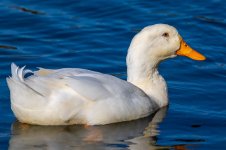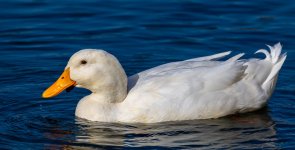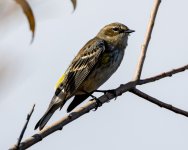I took the first two photos at one of the percolation ponds at Los Gatos Creek County Park in Campbell, CA late Christmas morning 2022. I assume its some kind of Goose, maybe domesticated or hybrid, but it doesn't seem to match anything in my books.
The third photo is from further down the Los Gatos Creek Trail at Vasona Lake in Los Gatos in the early afternoon the same day. My best guess is a Yellow-rumped Warbler, but I'm not sure.
Any help identifying these birds would be appreciated.
The third photo is from further down the Los Gatos Creek Trail at Vasona Lake in Los Gatos in the early afternoon the same day. My best guess is a Yellow-rumped Warbler, but I'm not sure.
Any help identifying these birds would be appreciated.







